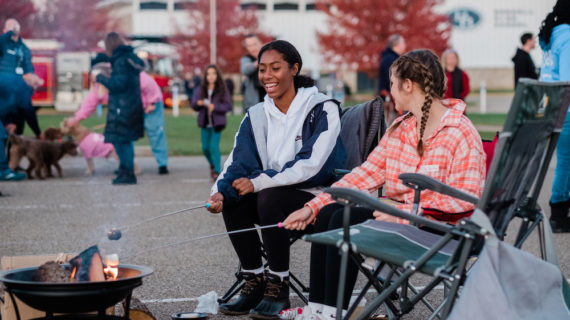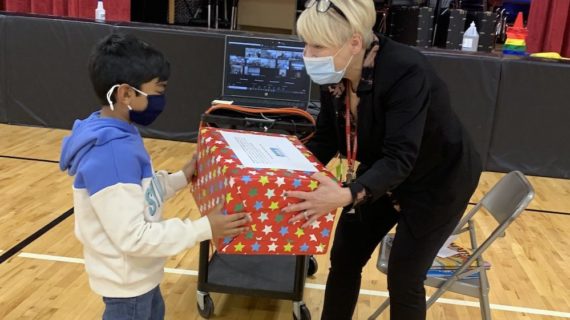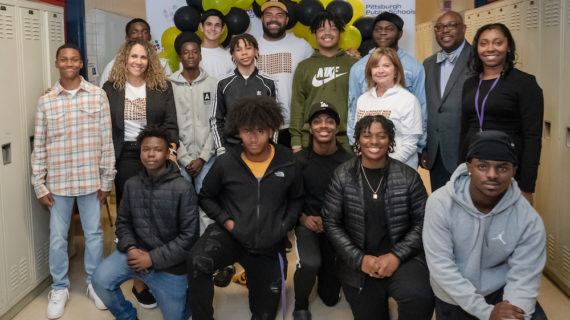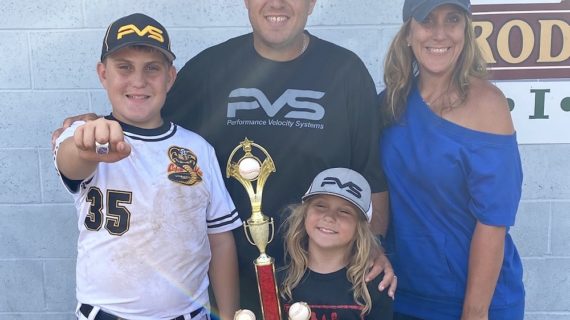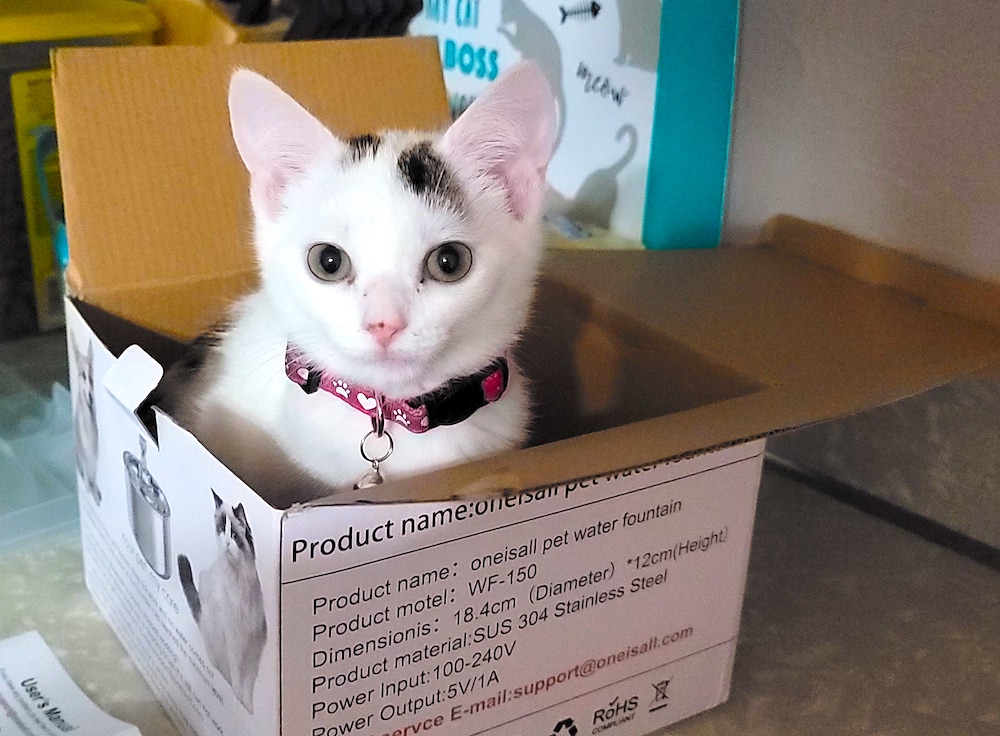
Love furry animals? Kitten Scoop pet rescue teaches families to help our region’s strays.
All photos courtesy of Kitten Scoop.
Amanda Coats co-founded the Kitten Scoop animal rescue earlier this year to help the many animals who don’t have homes where they are safe and fed. But along with rescuing and finding homes for animals in need, she also educates and supports families throughout the Pittsburgh region who want to get involved in helping animals, too.
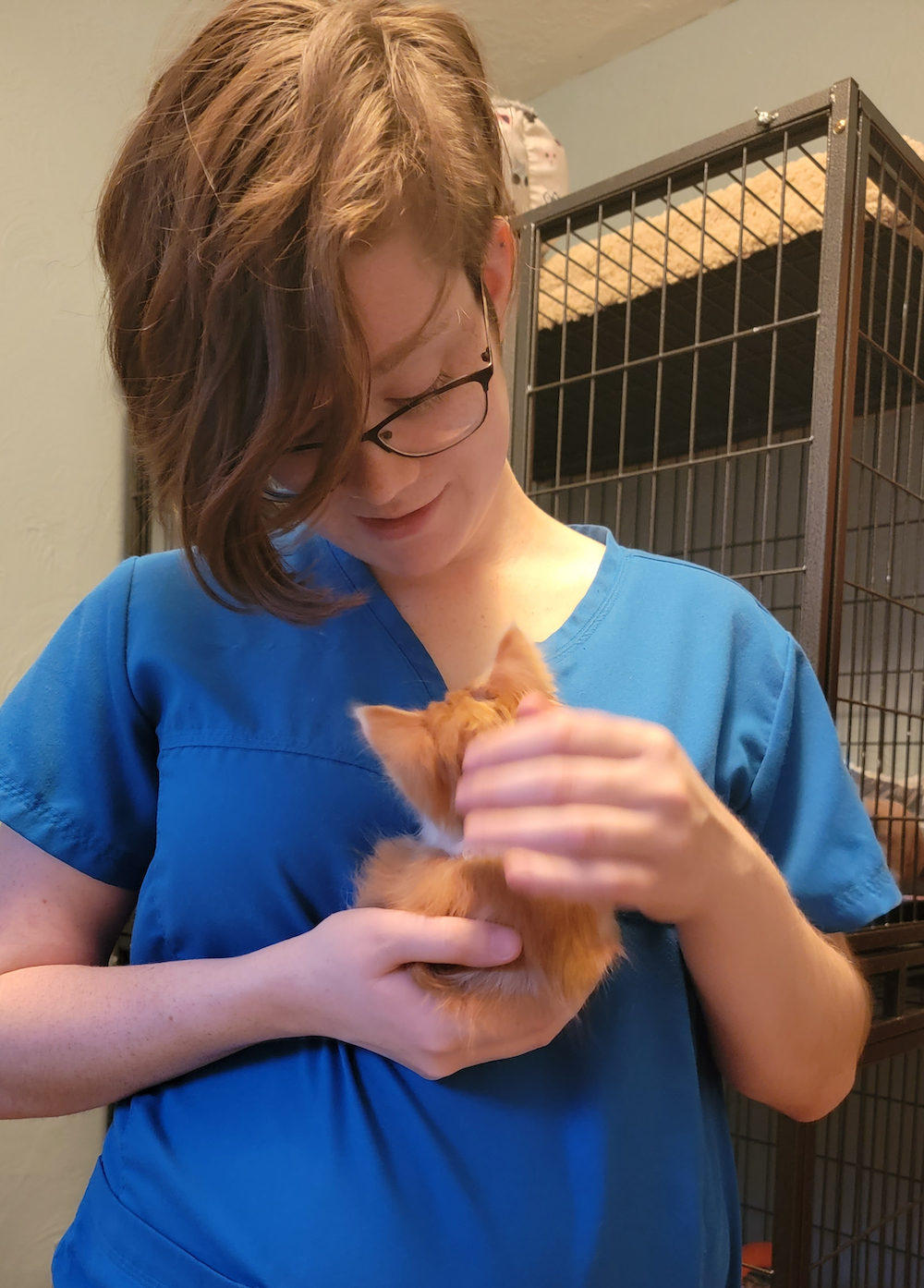
With the holidays on the horizon and cold weather approaching, this is a season when many families are thinking about how they might give back. If helping animals is something you’ve been curious about – or it’s a kind of volunteering that your children might be interested in – Kidsburgh talked with Coats about how families might get involved, and how she and her team at Kitten Scoop can help.
How families can get involved: cat care
Coats and her team welcome volunteers who want to help with basic cat care at their location in Exton, Pa., about 20 minutes east of the city. And they’re happy to teach these skills.
“We teach people as we’re doing the cat care – like, ‘This is why we do this. This is how you hold the kittens,’” Coats says. “They definitely get an education that way.”
Families can also organize pet food drives at their school or in their neighborhood, and then bring the food they’ve gathered to the shelter (and play with the cats when they visit).
Learning about trap-neuter-release
Kids and adults can also get educated about a method called trap-neuter-release (TNR). The best solution for stray cats, which Kitten Scoop team refers to as “community cats,” is making sure they can be spayed or neutered and getting them any medical care they might need
So Kitten Scoop practices TNR, and they also teach local families how to safely trap an outdoor cat or kitten (or litter of kittens) and then how to help get that animal spayed or neutered.
Once stray animals have gotten that help, sometimes they can be adopted – especially if they are young kittens under the age of 10 weeks. But that’s not always possible.
“We do breed assessments on whether they’re going to be friendly and adoptable,” Coats says, “but oftentimes the adults are not.”
In those cases the cat will be released, but the folks at Kitten Scoop can help volunteers to support that cat.
Learning to be a cat caretaker
Many Kidsburgh readers have dogs and cats at home who are beloved members of the family. And while they’d love to welcome a “community cat” into the warmth of their home, some outdoor cats aren’t tameable, Coats says.
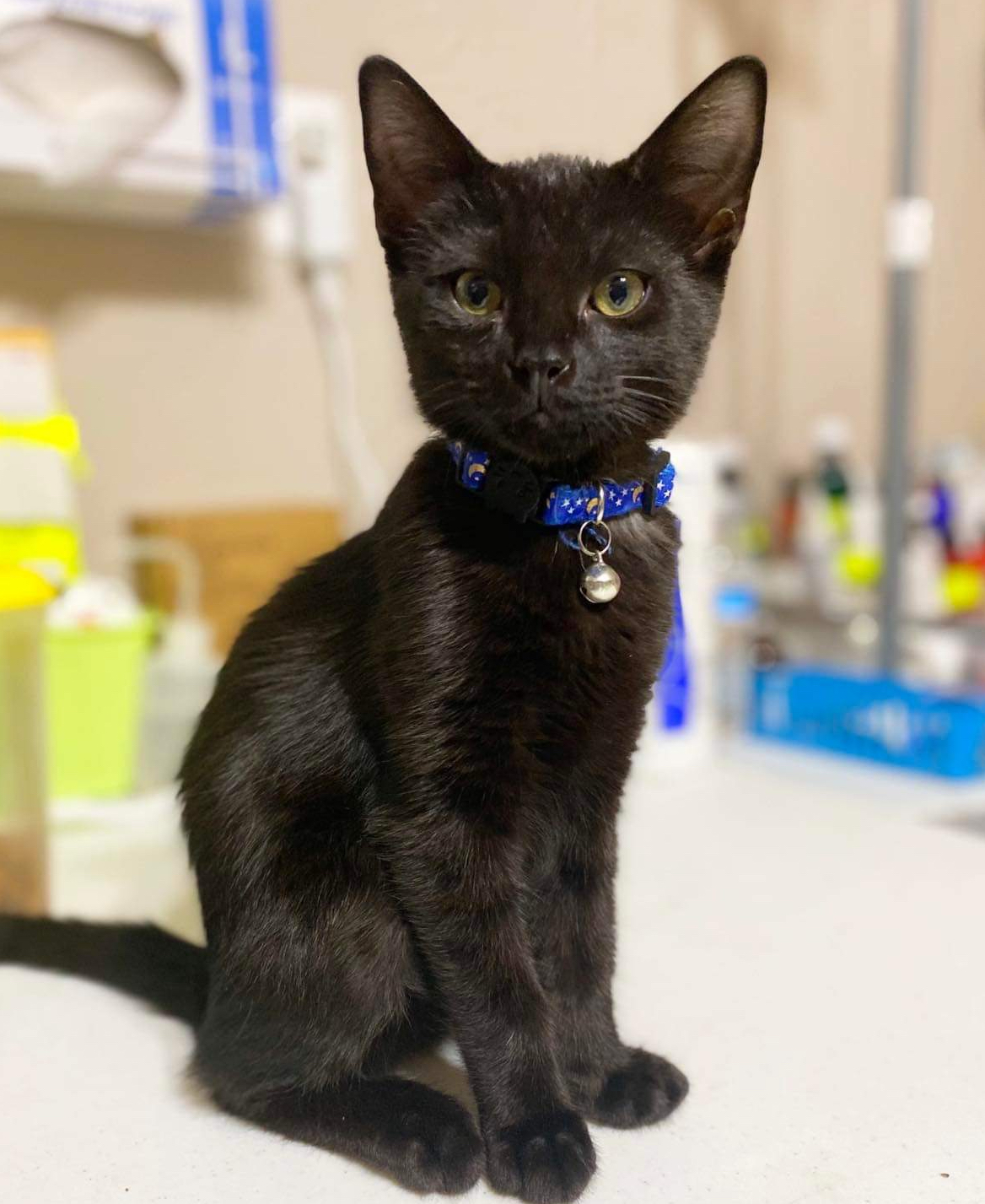
The good news is this: With a bit of training, a family can become a caretaker for an outdoor cat, ensuring that it has food and a relatively warm place to sleep during the winter.
“Everybody needs to survive, even the cats that we are trapping and returning. They still require a caretaker and someone to feed them every day,” she says. Even if they hunt, cats likely expend more calories trying to find and catch prey than they can get from consuming that prey.
That’s where Kitten Scoop’s training for volunteers comes in: Families learn how best to help the “community cats” in their neighborhood.
“We can make sure that they’re following all of the golden rules that are best for the cat after spay and neuter,” Coats says. “Make sure there’s somebody that is going to feed the cat and provide shelter. It doesn’t even require a lot of work. We’re talking about three minutes a day putting food outside.”
Kitten Scoop has been operating in the Murrysville area for a little less than a year, but Coats has been involved in animal rescue for 20 years. She began by rescuing dogs, but over time she learned how many cats and kittens need help.
“You can walk out every day and probably find a litter of kittens under your bush. You’re not going to find a litter of puppies anywhere that need saving,” Coats says. “While I was rescuing dogs, I would still rescue a mom and kittens every year because I would always hear about how bad ’kitten season’ is.”
Since then, she’s rescued nearly 2,000 cats, and she’s sharing her knowledge with as many people as possible.
“When I was starting to learn about 10 years ago, how to trap and how to do things best by the cats, it was a lot of research and there was really no one to guide me. There was no one to show me the best practices. And so I taught myself,” Coats says. “If I can teach you how to trap the cats yourself that you can feed … and I can show you the ways, and how to do the best humane trapping methods and colony management, then that’s great. I’m reaching 100 times more people than if I’m just out there in the field doing it myself.”

